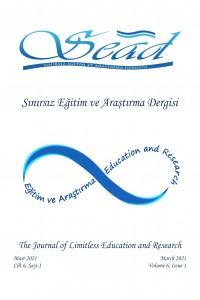Blended Learning and the Videoconferencing Modality for the Teaching and Learning Doctoral Candidate
Abstract
This paper simply documents the changes to a foundations course for teaching and learning doctoral candidates at a Midwest university, required due to the recent pandemic conditions and subsequent healthcare precautions. The main change to this already blended modality course, Critical Policy Analysis, involved modifying three face-to-face (F2F), in person sessions, essentially transforming them into three videoconferencing sessions using the ZOOM application. My reflection provides what can only be considered to be a discussion of very basic findings, but amongst those findings are that digital tools often appear to ‘work’ very seamlessly and hence exceed our collective expectations. The breakout sessions structured into the course, for example, provided a real-time experience comparable in most ways to small group discussions held previously when the course was offered in a physical classroom. However, some of the students struggled with the online portion of the class (course modules, with electronic reserve readings, discussion posts, and crafting a white paper/report, all online) and felt at times less than proficient working online. A few indicated preference for classes in person.
Also included in this paper are some of my observations as a long-time online instructor and researcher in the educational communications technology field. I argue that this latest iteration of blended learning is here to stay, and that this change will pose both promise and peril for education in the years ahead.
Keywords
References
- Lakoff, G. (2004/2014). Don't think of an elephant! Know your values and frame the debate. USA: Chelsea Green Publishing.
- Mumford, L. (1934). Technics and civilization. USA: The University of Chicago Press.
- Noble, D. F. (1984). Forces of production: A social history of industrial automation. USA: Routledge.
- Price, T. A. Wiring the World. In White, G. D. E. (2000). Campus, Inc.: Corporate Power in the Ivory Tower. USA: Prometheus Books.
- Price, T. A. (2010). Classrooms without walls: An exploration in the management of Video Distance Learning (VDL). Saarbrücken, Germany: Lambert Academic Publishing.
- Smith, M. L., Fey, P., and Heinecke, W. (2004). Political spectacle and the fate of American schools. USA: Routledge.
- Spector, H. and Price, T. A. (2020). As the Virtual Dust Settles Looking Back at and Beyond AAACS 2020. The Journal of the American Association for the Advancement of Curriculum Studies. 14(1)
Blended Learning and the Videoconferencing Modality for the Teaching and Learning Doctoral Candidate
Abstract
This paper simply documents the changes to a foundations course for teaching and learning doctoral candidates at a Midwest university, required due to the recent pandemic conditions and subsequent healthcare precautions. The main change to this already blended modality course, Critical Policy Analysis, involved modifying three face-to-face (F2F), in person sessions, essentially transforming them into three videoconferencing sessions using the ZOOM application. My reflection provides what can only be considered to be a discussion of very basic findings, but amongst those findings are that digital tools often appear to ‘work’ very seamlessly and hence exceed our collective expectations. The breakout sessions structured into the course, for example, provided a real-time experience comparable in most ways to small group discussions held previously when the course was offered in a physical classroom. However, some of the students struggled with the online portion of the class (course modules, with electronic reserve readings, discussion posts, and crafting a white paper/report, all online) and felt at times less than proficient working online. A few indicated preference for classes in person.
Also included in this paper are some of my observations as a long-time online instructor and researcher in the educational communications technology field. I argue that this latest iteration of blended learning is here to stay, and that this change will pose both promise and peril for education in the years ahead.
Keywords
References
- Lakoff, G. (2004/2014). Don't think of an elephant! Know your values and frame the debate. USA: Chelsea Green Publishing.
- Mumford, L. (1934). Technics and civilization. USA: The University of Chicago Press.
- Noble, D. F. (1984). Forces of production: A social history of industrial automation. USA: Routledge.
- Price, T. A. Wiring the World. In White, G. D. E. (2000). Campus, Inc.: Corporate Power in the Ivory Tower. USA: Prometheus Books.
- Price, T. A. (2010). Classrooms without walls: An exploration in the management of Video Distance Learning (VDL). Saarbrücken, Germany: Lambert Academic Publishing.
- Smith, M. L., Fey, P., and Heinecke, W. (2004). Political spectacle and the fate of American schools. USA: Routledge.
- Spector, H. and Price, T. A. (2020). As the Virtual Dust Settles Looking Back at and Beyond AAACS 2020. The Journal of the American Association for the Advancement of Curriculum Studies. 14(1)
Details
| Primary Language | English |
|---|---|
| Subjects | Studies on Education |
| Journal Section | Research Article |
| Authors | |
| Publication Date | March 15, 2021 |
| Submission Date | January 22, 2021 |
| Acceptance Date | March 15, 2021 |
| Published in Issue | Year 2021 Volume: 6 Issue: 1 |

